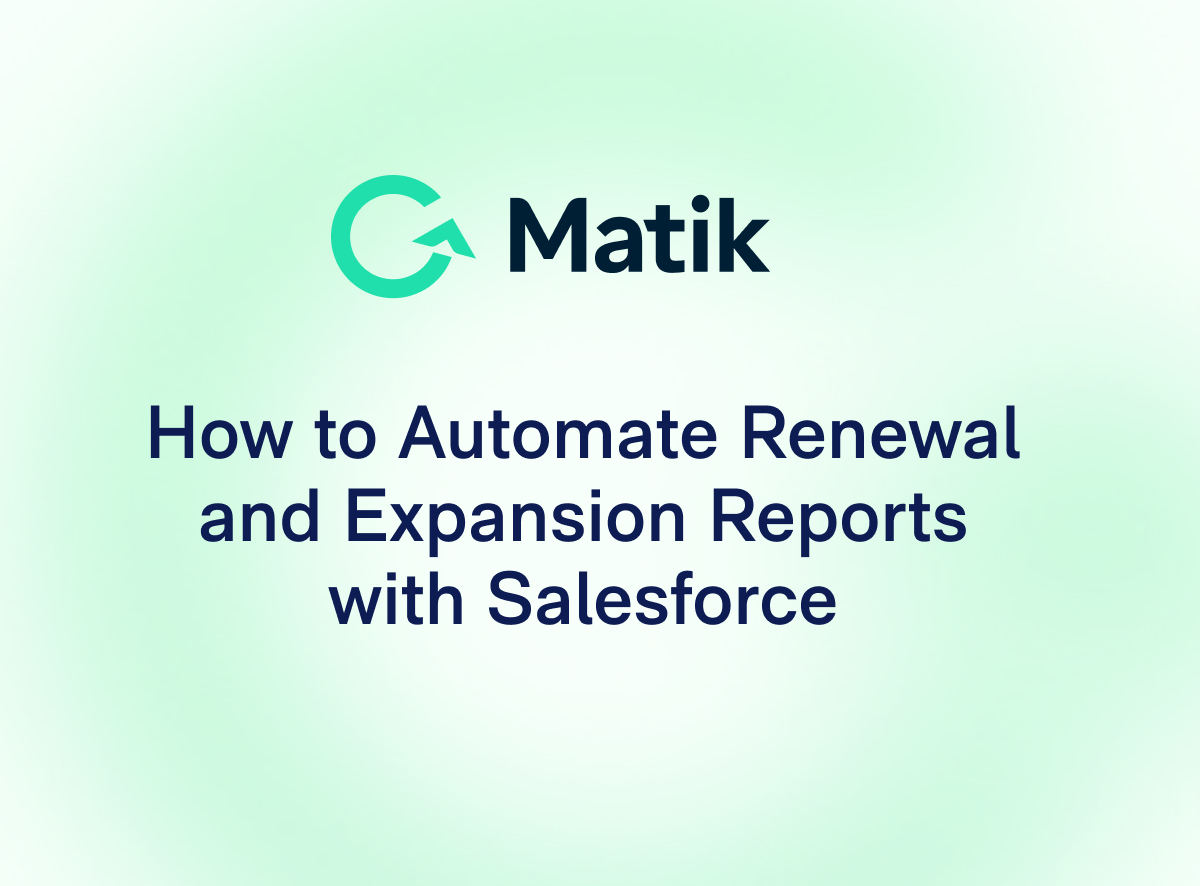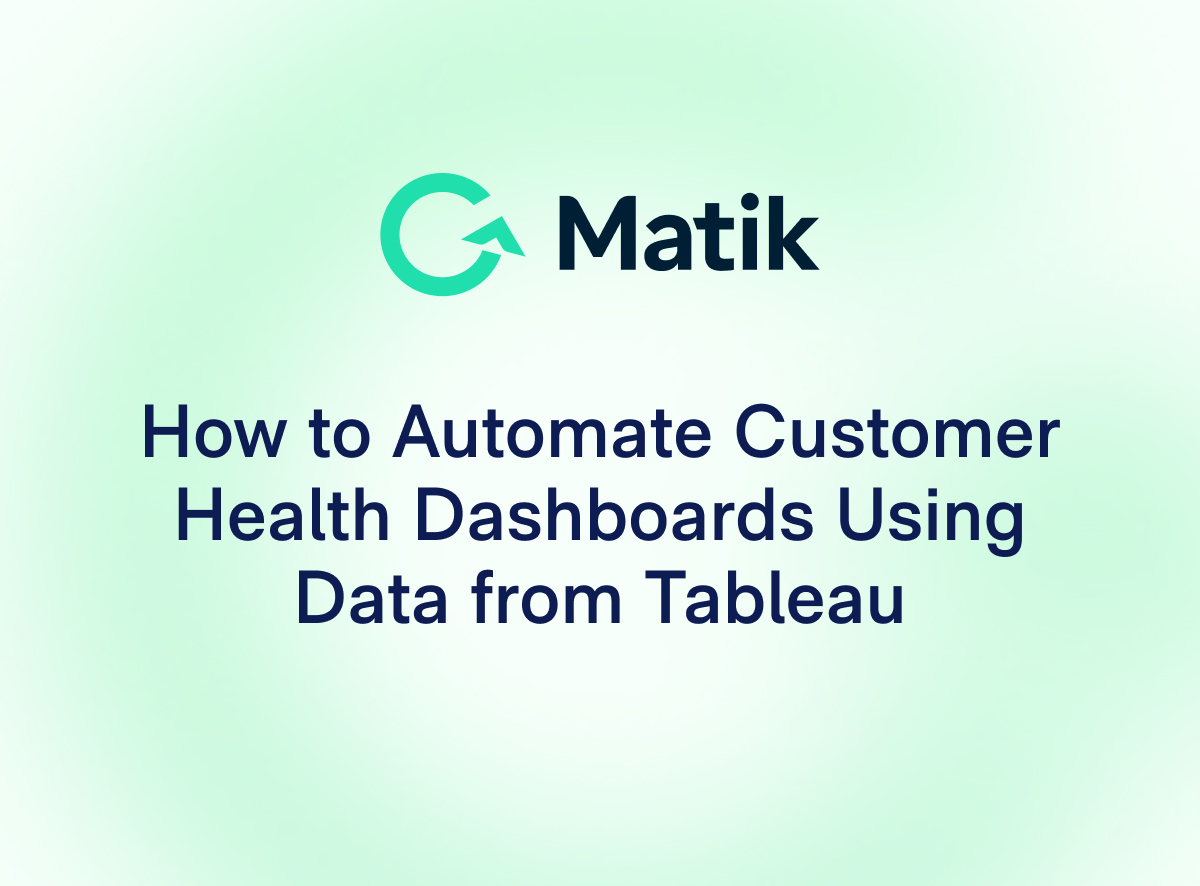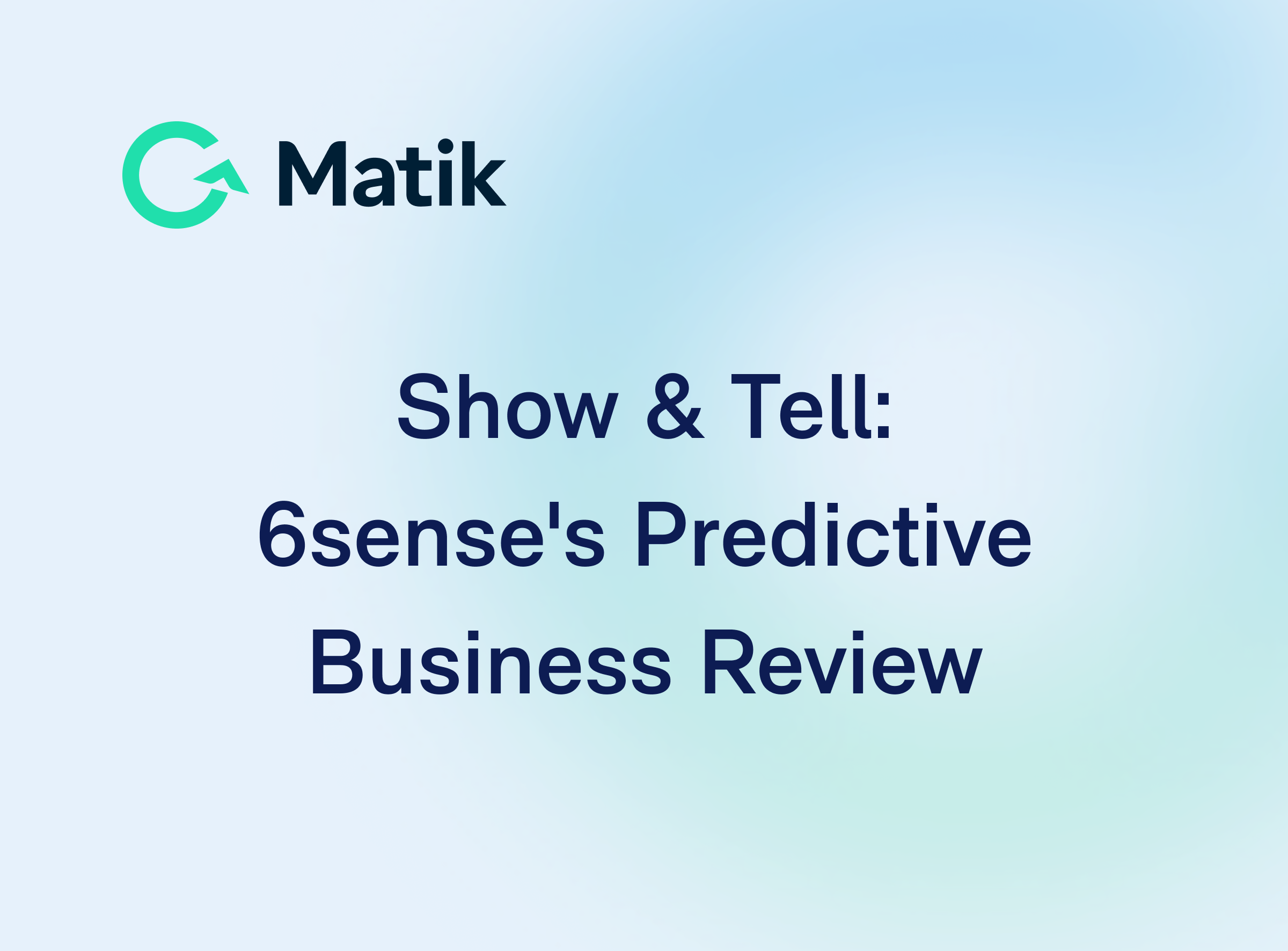Join Our Newsletter
Welcome to the latest post in our Content on Matik series. In this series, we will be taking a look at some of the innovative ways Matik customers have used data-driven storytelling to create compelling content, and build better relationships with their customers.
Meet the Renewal Deck.
What is a Renewal Deck?
A Renewal Deck is a several slide presentation that you can share with customers on an annual basis, usually about 3 months in advance of the renewal date. This presentation should focus on your partnership with a customer, their progress, and any future developments in your product that you think could help them become even more successful in the coming year.
With a Renewal Deck, remember that data is king, but try not to get too into the weeds. Too much data and the conversation will lack focus; too little data and you miss an opportunity to demonstrate the value you’ve built in the account to date.
What is the value of a Renewal Deck?
Renewal Decks are incredibly important because they help you kick off the larger renewal conversation with your customer. After this meeting where you show the value you’ve built and the progress your customer has made, you’ll have several follow-up meetings to discuss projected seat totals, to review pricing proposals, to go through potential negotiations, and to agree on and sign new contracts.
This Renewal Deck (and the meeting you have with your customer to present the deck in) is also an excellent opportunity to gauge if there’s any churn risk in the account. If so, you can use this time to start an honest conversation with your customer about any obstacles they're experiencing.
It’s vital for the Renewal Deck to be presented about 3 months in advance of the contract end date, in order to give you plenty of time to build this value and address any blockers that could stand in the way of you and a successful renewal or upsell.
What is in a Renewal Deck?
As always, kick off your deck with a round of intros and an agenda, to get everyone acquainted and on the same page about what this meeting will cover.
The next slide in the Renewal Deck should recap the original goals of your partnership, which you should have identified with your customer during the very beginning of the implementation process. These goals have likely evolved over the course of the contract, so follow this slide up immediately with a second slide that calls out the most current, relevant and important goals that you and your customer would like to aim for in the future.
After you’ve reviewed these high-level goals, it’s time to present some data - both qualitative and quantitative. Start out with a slide that highlights some user success stories. You will need to do your homework in advance of this meeting to collect user quotes, headshots, titles, and usage data in order to make this qualitative slide. Although it’s not all hard numbers, this more anecdotal data is often very powerful and can demonstrate to your decision maker how your tool has impacted their team’s workflow.
This mostly qualitative slide should then be followed up with quantitative metrics about overall adoption and usage of your product by this customer’s team. Use graphs, charts, tables, and other visualizations wherever possible to help paint a picture for your audience that’s smart, straightforward and easily digestible.
The next section of slides is undoubtedly the most important - it’s your Value Review. This is where you can take the goals from the first few slides, tie them to measurable KPIs that matter to your customer, and then report on the progress of the KPIs up to this point in the contract. From there, try to tie these KPIs back to cost-savings, headcount savings, or revenue generation in order to get an ROI estimate for the value your customer has seen with your product. For more information about how to translate KPIs to ROI, see this blog post: https://www.matik.io/blog/content-on-matik-roi-one-pagers.
Finish off the Renewal Deck with a Product Roadmap visualization that highlights the upcoming features in your product that your customer cares about. Use this as an opportunity to talk to your customer about how these features could help them see even more value in your product over the coming year if they choose to renew.
In Short
Renewal Decks are a tool for kicking off a larger conversation with your customer about value add, seat count, pricing, contracts and any potential blockers that could stand in the way of you and a successful renewal or upsell.
---
See Matik in Action—Request a Demo















